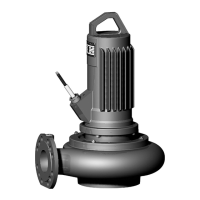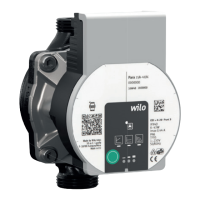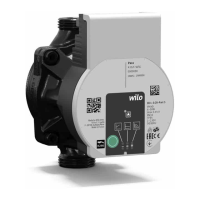Do you have a question about the Wilo Wilo-EMU FA + FK 17.1 and is the answer not in the manual?
| Type | Submersible sewage pump |
|---|---|
| Max. immersion depth | 10 m |
| Degree of protection | IP68 |
| Insulation class | F |
| Power | 1.7 kW |
| Voltage | 400 V |
| Frequency | 50 Hz |
| Application | Sewage |
| Mains connection | 3~ 400 V |
| Motor protection | Thermal overload protection |
| Pump housing material | Cast iron |
| Impeller material | Cast iron |
| Motor housing material | Cast iron |
| Shaft material | Stainless steel |
| Mechanical seal | SiC/SiC |
| Outlet Diameter | 65 mm |
Explains how safety instructions are presented and the types of risks involved, including dangers to persons and environment.
Explains signal words (DANGER, WARNING, CAUTION, NOTE) and presents symbols used for safety warnings.
Details required qualifications for personnel performing installation, dismantling, and maintenance tasks.
Outlines requirements for qualified electricians and adherence to local regulations for electrical work.
Outlines safety measures for installation, dismantling, and during pump operation, including explosion risks.
Details safety warnings and notices related to installation work, lifting, and dangerous environments.
Warns about the risks of electrocution during electrical work and the need for qualified personnel.
Outlines checks for insulation resistance of motor windings and resistance tests for temperature sensors.
Emphasizes safety for connecting monitoring devices, especially in explosive areas, and correct wiring.
Defines personnel qualifications and operator responsibilities for commissioning the pump system.
Details ATEX and FM approval requirements for operation in explosive areas and warnings.
Highlights dangers during operation, including overpressure, rotating parts, hot surfaces, and low water levels.
Outlines steps for decommissioning the pump, including switching off, securing, and frost protection.
Details resistance testing procedures for internal electrodes, temperature sensors, and external electrodes.
Highlights dangers related to hazardous fluids, electrocution, and dangerous work during fault finding.
Lists causes and solutions for the pump not starting, including electrical supply and motor issues.
Addresses issues where the motor protection trips shortly after startup, due to incorrect settings or voltage drops.
Explains causes and remedies when the pump starts but doesn't reach the duty point, including hydraulics jamming.
Provides solutions for pumps that run roughly or make excessive noise, including motor bearing wear.
Covers identification, protection classes, and electrical connection for Ex-rated pumps in explosive atmospheres.
Details motor winding monitoring for Ex-rated pumps, including safety warnings related to overheating.
Covers sealing chamber monitoring and frequency converter operation in explosive atmospheres.
Guidelines for commissioning and maintenance of Ex-rated pumps in explosive areas, following regulations.











